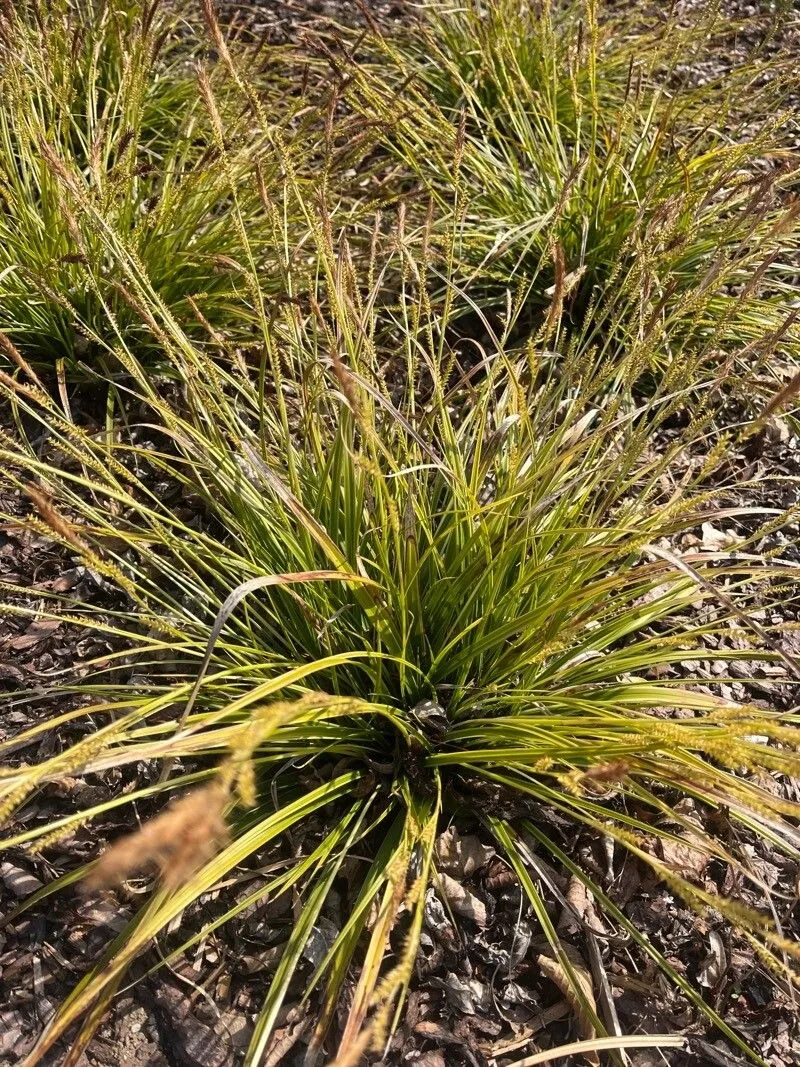
Author: All.
Bibliography: Fl. Pedem. 2: 272 (1785)
Year: 1785
Status: accepted
Rank: species
Genus: Carex
Vegetable: Unknown
Observations: Europe to C. Asia
Tufted sedge, scientifically known as Carex elata, is a prominent species admired for its allure and ecological significance. First documented in 1785 within the botanical reference “Flora Pedemontana” (Volume 2, Page 272) by the notable botanist Allioni, this plant has since been extensively observed across a wide geographical range extending from Europe to Central Asia.
This robust sedge belongs to the Cyperaceae family, a distinguished group within monocotyledonous flowering plants commonly referred to as the sedge family. Carex elata is characterized by its dense, tufted appearance which provides an aesthetically pleasing dimension to many natural and managed landscapes. Its physical structure consists of clumps of upright stems that often create a striking visual impact.
In terms of habitat, Tufted sedge has a preference for moist, marshy environments where it plays a critical role in supporting local ecosystems. These habitats range across diverse climatic zones, evidencing the plant’s adaptability and resilience. Whether lining the edges of ponds, wetlands, or riverbanks, Carex elata contributes significantly to water purification and soil stabilization.
Ecologically, Carex elata is a key species in many freshwater habitats, providing food and shelter for various insects, birds, and small mammals. Its presence is also notable for supporting biodiversity, as it offers a unique microenvironment that thrives in symbiotic harmony with other flora and fauna.
Gardening enthusiasts and landscape architects often utilize Tufted sedge for its ornamental value and its ability to thrive in conditions that might be challenging for other plants. Its lush, green foliage and maintenance-friendly growth habit make it an excellent choice for water gardens, wet meadow plantings, and areas prone to occasional flooding.
In summary, Carex elata or Tufted sedge stands out not only for its ornamental charm but also for its indispensable ecological benefits. Its widespread distribution from Europe to Central Asia highlights its adaptability, making it a valuable species both for natural habitats and cultivated landscapes.
Nor: bunkestarr
Deu: steife segge
Dan: stiv star
Swe: bunkestarr, piukkasara
Nob: bunkestarr
Nno: bunkestorr
Fra: laîche raide, laîche élevée
Spa: masiega
Fin: piukkasara
Nld: stijve zegge
Eng: tufted sedge, tufted-sedge
Cym: hesg tuswog, hesgen duswog, hesgen oleulas sythddail, swp-hesgen y fawnog
En: Tufted sedge, Tufted-sedge
Az: Hündür cil
Cv: Çӳллĕ хăях
Hr: Busenasti šaš
Cs: Ostřice vyvýšená
Da: Stiv Star
Nl: Stijve zegge
Et: Luhttarn
Fi: Piukkasara
Fr: Laîche élevée, Laîche Raide, Laiche élevée, Laiche raide
De: Steife Segge
Hu: Zsombéksás
It: Carice spondicola, Carice alta
Lv: Augstais grīslis
Lt: Aukštoji viksva
No: Bunkestarr
Nb: Bunkestarr
Nn: Bunkestorr
Fa: کارکس استریکتا
Pl: Turzyca sztywna
Pt-br: Junquinho, Capim-junquinho
Ru: Осока высокая
Es: Masiega
Sv: Bunkestarr, Piukkasara
Uk: Осока висока
Cy: Hesgen duswog, Hesg Tuswog, Hesgen Oleulas Sythddail, Swp-Hesgen y Fawnog
Taken Jul 6, 2018 by Tela Botanica − Jean-Claude Bouzat (cc-by-sa)
Taken Jul 6, 2018 by Tela Botanica − Jean-Claude Bouzat (cc-by-sa)
Taken May 5, 2017 by Tela Botanica − Florent BECK (cc-by-sa)
Taken May 6, 2021 by Radford Ashley (cc-by-sa)
Taken Jun 1, 2021 by Glyn Davies (cc-by-sa)
Taken May 28, 2017 by Yoan MARTIN (cc-by-sa)
Taken May 28, 2017 by Yoan MARTIN (cc-by-sa)
Taken May 28, 2017 by Yoan MARTIN (cc-by-sa)
Taken May 28, 2017 by Yoan MARTIN (cc-by-sa)
Taken Apr 18, 2006 by Tela Botanica − Mathieu MENAND (cc-by-sa)
Taken May 28, 2017 by Yoan MARTIN (cc-by-sa)
Taken May 28, 2017 by Yoan MARTIN (cc-by-sa)
Taken May 28, 2017 by Yoan MARTIN (cc-by-sa)
Taken May 28, 2017 by Yoan MARTIN (cc-by-sa)
Taken May 5, 2017 by Tela Botanica − Florent BECK (cc-by-sa)
Taken Sep 10, 2022 by Isa Muller (cc-by-sa)
Taken Aug 18, 2019 by pascal (cc-by-sa)
Taken Oct 20, 2020 by suzanne durie (cc-by-sa)
Taken Apr 28, 2022 by Lucie Voncová (cc-by-sa)
© copyright of the Board of Trustees of the Royal Botanic Gardens, Kew.
Taken Jul 6, 2018 by Tela Botanica − Jean-Claude Bouzat (cc-by-sa)
Taken Jan 1, 1970 by Photoflora – L’Abbé COSTE (©)
Taken Apr 6, 2008 by Tela Botanica − Mathieu MENAND (cc-by-sa)
Taken Jun 30, 2014 by Tela Botanica − Quentin LEBASTARD (cc-by-sa)
Taken Jun 30, 2014 by Tela Botanica − Quentin LEBASTARD (cc-by-sa)
Family: Myrtaceae Author: (F.Muell.) K.D.Hill & L.A.S.Johnson Bibliography: Telopea 6: 402 (1995) Year: 1995 Status:…
Family: Rubiaceae Author: Pierre ex A.Froehner Bibliography: Notizbl. Bot. Gart. Berlin-Dahlem 1: 237 (1897) Year:…
Family: Sapindaceae Author: Koidz. Bibliography: J. Coll. Sci. Imp. Univ. Tokyo 32(1): 38 (1911) Year:…
Family: Asteraceae Author: A.Gray Bibliography: Pacif. Railr. Rep.: 107 (1857) Year: 1857 Status: accepted Rank:…
Family: Fabaceae Author: Medik. Bibliography: Vorles. Churpfälz. Phys.-Ökon. Ges. 2: 398 (1787) Year: 1787 Status:…
Family: Aspleniaceae Author: (Cav.) Alston Bibliography: Bull. Misc. Inform. Kew 1932: 309 (1932) Year: 1932…